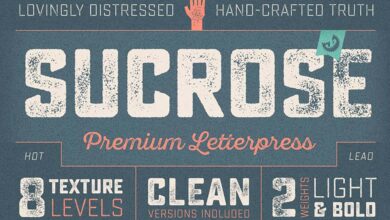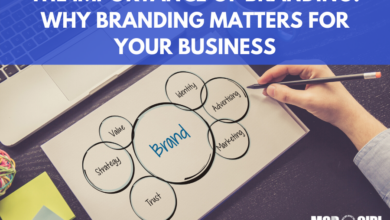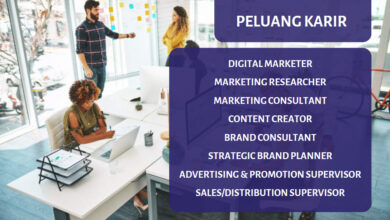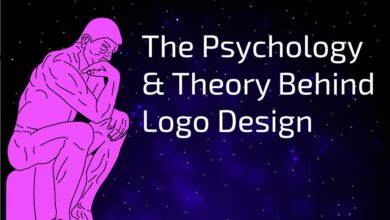
Text Imagery A Marketing Heaven Marriage
Text imagery a marriage made in marketing heaven – Text Imagery: a marriage made in marketing heaven. That’s the beautiful truth I’m exploring today! We’re diving deep into how the right words can paint a picture more vivid than any image, crafting emotional connections with your audience that truly resonate. Think of the power of a single, perfectly chosen phrase to evoke the feeling of a summer breeze or the rich aroma of freshly brewed coffee – that’s the magic we’re unlocking.
This post unpacks the art of using text imagery to create compelling marketing campaigns. We’ll look at practical techniques, successful examples across various media, and even discuss how to measure the impact of your word-painting. Get ready to transform your marketing with the power of evocative language!
Defining “Text Imagery” in Marketing: Text Imagery A Marriage Made In Marketing Heaven

Source: iconscout.com
Text imagery in marketing is the art of using evocative language to create a vivid mental picture in the consumer’s mind. It goes beyond simply describing a product; it aims to engage the reader’s senses and emotions, transporting them to a specific place or experience associated with the brand or product. This powerful technique bypasses literal visual representation, relying instead on the reader’s imagination to build the image.Text imagery leverages the power of words to paint a picture, appealing to the reader’s senses of sight, sound, smell, taste, and touch.
By skillfully employing figurative language like metaphors, similes, and personification, marketers can create compelling narratives that resonate deeply with their target audience. The effectiveness of this approach lies in its ability to foster a personal connection with the consumer, making the marketing message more memorable and persuasive.
Examples of Marketing Campaigns Utilizing Text Imagery
Several successful marketing campaigns have masterfully employed text imagery. Consider the iconic tagline “Like a good neighbor, State Farm is there.” This simple phrase conjures up feelings of security, reliability, and friendly support, all without showing a single image of a State Farm agent or policy. Similarly, the L’Oréal tagline, “Because you’re worth it,” transcends the product itself, tapping into a sense of self-worth and aspiration that resonates with its target demographic.
These examples highlight the power of concise, evocative language in building a strong brand identity and consumer connection.
Techniques for Crafting Evocative Text Imagery
Crafting effective text imagery requires a careful selection of words and a keen understanding of the target audience. Several techniques can help marketers create compelling text imagery:
First, sensory details are crucial. Instead of simply stating “The coffee is hot,” a marketer might write “The rich aroma of freshly brewed coffee filled the air, its warmth spreading through your hands as you cradled the steaming mug.” This description engages multiple senses, making the experience more vivid and memorable.
Second, figurative language is essential. Metaphors (“The city was a concrete jungle”) and similes (“The car was as smooth as silk”) create comparisons that add depth and interest. Personification (“The wind whispered secrets through the trees”) brings inanimate objects to life, adding a layer of emotional resonance.
Third, strong verbs and adjectives are vital for creating impactful imagery. Instead of using weak verbs like “was” or “is,” choose stronger verbs that convey action and emotion. Similarly, use vivid adjectives to paint a clearer picture. For instance, instead of “a big house,” describe it as “a sprawling Victorian mansion with intricate gingerbread trim and towering bay windows.”
Comparative Analysis of Text Imagery and Literal Imagery
| Technique | Text Imagery Example | Literal Imagery Example | Comparative Analysis |
|---|---|---|---|
| Promoting a Perfume | “Imagine a sun-drenched Mediterranean garden, bursting with the intoxicating scent of jasmine and ripe oranges. That’s the essence of ‘Soleil’.” | [Image of a woman smiling, holding a bottle of perfume against a backdrop of a sun-drenched Mediterranean garden.] | Text imagery relies on the reader’s imagination to create a personal sensory experience, potentially leading to a stronger emotional connection. Literal imagery presents a pre-defined visual, which may lack the same level of individual engagement. |
| Advertising a Car | “Feel the wind in your hair as you glide down the highway, the engine purring like a contented cat. Experience the exhilaration of effortless power.” | [Image of a sleek, fast car speeding down a highway.] | Text imagery focuses on the emotional experience of driving the car, while the literal image primarily showcases the car’s aesthetic appeal. |
| Selling Chocolate | “The rich, dark chocolate melts on your tongue, releasing a cascade of bittersweet flavors that dance across your palate. A symphony of textures and tastes.” | [Image of a close-up of a piece of chocolate melting.] | Text imagery emphasizes the sensory experience of tasting the chocolate, potentially stimulating a greater desire to consume it. Literal imagery simply presents the chocolate visually. |
| Promoting a Vacation Resort | “Escape to a tropical paradise where turquoise waters lap gently against pristine white sand. Feel the warm sun on your skin and the gentle sea breeze in your hair.” | [Image of a beautiful beach with crystal clear water and palm trees.] | Text imagery allows the reader to create their own personalized experience of the resort, fostering a stronger desire to visit. Literal imagery offers a static visual that may not resonate with every individual. |
The Power of Evocative Language

Source: captevrix.com
Text imagery in marketing isn’t just about pretty pictures; it’s about crafting words that paint a picture in the reader’s mind, creating an emotional connection that transcends the purely visual. Evocative language is the key to unlocking this potential, transforming simple product descriptions into compelling narratives. By carefully selecting words and employing specific literary techniques, marketers can create a visceral experience for their audience, driving engagement and ultimately, sales.Sensory details are the building blocks of vivid text imagery.
They allow the reader to experience the product or service through their five senses. Instead of simply stating “Our coffee is rich,” a more effective approach might be “The aroma of dark roasted beans fills the air, a rich, intoxicating scent that promises a bold, satisfying taste, followed by a velvety smooth finish that lingers pleasantly on the palate.” This description engages taste, smell, and touch, creating a far more memorable impression than a simple adjective.
The Role of Sensory Details in Creating Vivid Text Imagery
Using sensory details transports the reader beyond the text. Imagine a campaign for a luxury car. Instead of saying “The car is comfortable,” describe the supple leather seats, the quiet hum of the engine, the smooth glide of the suspension absorbing bumps in the road, the subtle scent of new leather, and the panoramic view from the expansive sunroof.
Each detail adds to the overall sensory experience, making the reader feel as though they’re sitting behind the wheel. This immersive experience is far more persuasive than a list of technical specifications.
The Impact of Figurative Language on Text Imagery
Figurative language adds depth and nuance to text imagery. Metaphors, similes, and personification breathe life into otherwise static descriptions. A metaphor, such as “Our software is a seamless extension of your workflow,” paints a clear picture of effortless integration. A simile, like “Our lotion is as smooth as silk,” evokes the luxurious texture. Personification, such as “Let our cleaning service take the weight off your shoulders,” creates a relatable and emotionally resonant image.
These figures of speech make the text memorable and engaging, leaving a lasting impression on the reader.
The Use of Strong Verbs and Nouns to Enhance Visual Impact
Strong verbs and nouns are the backbone of powerful text imagery. Instead of “The car is fast,” use “The car accelerates with breathtaking speed.” Instead of “The fabric is soft,” use “The fabric drapes luxuriously.” Strong verbs add action and energy, while evocative nouns create concrete images. Precise word choice is crucial; each word should contribute to the overall sensory experience, creating a clear and compelling mental picture.
Examples of Marketing Slogans Utilizing Text Imagery
Effective slogans often employ powerful text imagery to leave a lasting impact. Here are five examples:
- “Red Bull: Red Bull gives you wings.” This slogan uses a powerful metaphor to associate the drink with energy and freedom, creating a sense of flight and exhilaration.
- “L’Oréal: Because you’re worth it.” This slogan uses a simple yet effective affirmation, suggesting self-worth and indulgence.
- “Dove: Real beauty is real.” This slogan employs a strong contrast to highlight the brand’s commitment to authenticity and inclusivity.
- “Nike: Just Do It.” This iconic slogan is a powerful call to action, using minimal words to create a lasting impression of empowerment and determination.
- “M&M’s: Melts in your mouth, not in your hand.” This slogan uses a memorable contrast to highlight the unique texture and enjoyment of the candy.
These slogans are successful because they are concise, memorable, and evocative. They create a vivid image in the consumer’s mind, associating the brand with specific feelings and experiences.
Text Imagery Across Different Media

Source: dreamstime.com
Text imagery, the art of using evocative language to create vivid mental pictures in the minds of your audience, adapts beautifully to various marketing channels. Its effectiveness hinges on understanding the unique characteristics of each medium and tailoring your approach accordingly. The power of a well-crafted phrase can resonate differently in a print advertisement compared to a tweet, requiring a nuanced understanding of each platform’s strengths and limitations.
The key to successful text imagery across different media lies in understanding the context and limitations of each platform. Print advertising offers a more contemplative experience, allowing for longer, more descriptive text. Digital marketing, with its emphasis on brevity and scannability, necessitates a different approach, often favoring punchy headlines and concise calls to action. Social media, with its fast-paced, informal nature, demands even greater conciseness and a focus on engaging, shareable content.
Text Imagery in Print, Digital, and Social Media
Print advertising provides space for richly descriptive text. Think of a perfume ad in a glossy magazine, where the copy might evoke the scent’s notes with phrases like “a sun-drenched citrus burst, followed by a warm, woody embrace.” This allows for a more immersive, sensory experience. In contrast, digital marketing often prioritizes concise and impactful language, focusing on s and calls to action.
A Google Ad might use the phrase “Get Instant Relief from Back Pain” – direct, action-oriented, and easily scannable. Social media, with its character limits, demands even greater brevity. A compelling tweet might simply state “Unleash your inner artist with our new art supplies!” – short, punchy, and designed to spark immediate interest.
Examples of Successful Text Imagery Across Marketing Channels
Consider a print advertisement for a luxury car that describes the driving experience as “a symphony of power and grace,” creating a feeling of elegance and sophistication. In digital marketing, a travel agency might use the phrase “Escape the everyday” on their website banner, triggering a desire for adventure and relaxation. On social media, a food brand might post a picture of their product with the caption “Taste the sunshine,” associating their food with positive emotions and creating a sense of warmth and happiness.
Best Practices for Text Imagery Across Media
| Medium | Best Practices | Example | Potential Pitfalls |
|---|---|---|---|
| Print Advertising | Use evocative language, create a sensory experience, longer copy is acceptable. | “Indulge in the rich, velvety texture of our new chocolate.” | Overly flowery language, losing the reader’s attention. |
| Digital Marketing | Concise, -rich, strong call to action. | “Shop Now and Save 20%!” | Lack of clarity, irrelevant s, weak call to action. |
| Social Media | Short, engaging, shareable, use relevant hashtags. | “Weekend vibes #relax #getaway” | Too much jargon, irrelevant hashtags, poor grammar. |
Adapting Text Imagery for Different Target Audiences
Adapting text imagery for different audiences requires understanding their values, interests, and communication styles. For example, marketing luxury goods to a younger audience might involve using more playful and informal language, whereas marketing to an older demographic might require a more sophisticated and refined tone. A campaign targeting environmentally conscious consumers would benefit from using language that emphasizes sustainability and ethical practices.
A campaign focused on a younger audience might use slang or internet memes to increase relatability. Conversely, a campaign for a financial product targeting a more mature audience would prioritize trustworthiness and authority through formal and precise language.
The Emotional Impact of Text Imagery
Text imagery, the art of using evocative language to paint pictures in the reader’s mind, isn’t just about aesthetics; it’s a powerful tool for connecting with consumers on an emotional level. By carefully choosing words and crafting compelling narratives, marketers can tap into a wide range of feelings, influencing purchasing decisions and building lasting brand loyalty. This goes beyond simply describing a product; it’s about creating an experience, a feeling, a connection.The ability of text imagery to evoke emotion stems from our inherent human tendency to respond to stories and narratives.
We are wired to empathize, to feel joy, sorrow, or excitement based on the experiences described. When text imagery skillfully taps into these primal responses, it creates a powerful bond between the brand and the consumer, fostering trust and preference. This emotional connection is far more enduring than a purely rational appeal based on features and specifications.
Evocative Language and Emotional Response
Specific words and phrases can trigger powerful emotional responses. For example, words like “cozy,” “serene,” or “luxurious” immediately conjure up feelings of comfort, tranquility, and opulence. Conversely, words like “bold,” “adventurous,” or “powerful” can evoke feelings of excitement, daring, and strength. Mastering this vocabulary and understanding how different word choices elicit different emotional responses is key to creating effective text imagery.
Consider the difference between advertising a coffee as “rich and dark” versus “smooth and comforting.” The former evokes a sense of intensity, while the latter suggests relaxation and warmth. This subtle shift in language dramatically alters the emotional landscape of the advertisement.
Examples of Emotionally Driven Marketing Campaigns
Many successful marketing campaigns demonstrate the power of text imagery to connect with consumers emotionally. Dove’s “Real Beauty” campaign, for instance, used evocative language to challenge traditional beauty standards and promote body positivity. Their use of phrases like “real women, real beauty” resonated with a large audience, creating a strong emotional connection based on inclusivity and self-acceptance. Similarly, Patagonia’s focus on environmental conservation in their marketing materials evokes feelings of responsibility and connection to nature, fostering loyalty among environmentally conscious consumers.
Their storytelling, often centered around the experiences of outdoor enthusiasts, creates a shared sense of purpose and community.
Strategies for Building Brand Identity and Loyalty Through Text Imagery
Building a strong brand identity and fostering customer loyalty relies on consistent and effective use of text imagery. This involves establishing a clear brand voice and tone that aligns with the desired emotional response. A consistent brand voice ensures that all marketing materials—from website copy to social media posts—evoke the same feelings and create a cohesive brand experience.
Furthermore, actively soliciting customer feedback and incorporating real customer stories into marketing materials can create powerful emotional connections. Highlighting positive customer experiences and testimonials, using evocative language to describe those experiences, helps build trust and reinforces brand loyalty.
Examples of Text Imagery Evoking Specific Emotions
To further illustrate the point, let’s examine three distinct emotions and how text imagery might be used to evoke them in a marketing campaign.
It’s important to note that the effectiveness of text imagery hinges on the target audience and the overall brand message. What resonates with one group may not resonate with another.
- Joy: Imagine a campaign for a family vacation resort. The text imagery could describe “sun-drenched beaches,” “laughter echoing across the turquoise waters,” and “unforgettable moments shared with loved ones.” These phrases evoke feelings of happiness, relaxation, and togetherness.
- Nostalgia: A campaign for a classic car brand might use phrases like “the roar of the engine,” “the scent of leather and polished wood,” and “memories made on open roads.” This evokes a sense of longing for simpler times, a connection to the past, and a feeling of cherished experiences.
- Security: A financial institution might use phrases like “secure your future,” “protect your family’s legacy,” and “build a strong foundation for tomorrow.” This evokes feelings of safety, stability, and peace of mind, associating the brand with reliability and trustworthiness.
Measuring the Effectiveness of Text Imagery
Measuring the impact of text imagery on consumer behavior requires a strategic approach that goes beyond simple gut feelings. We need quantifiable data to understand if our evocative words are truly resonating with our target audience and driving the desired actions. This involves careful planning, robust tracking, and insightful analysis.Effective measurement hinges on defining clear objectives beforehand. What specific behaviors are we hoping to influence with our text imagery?
Are we aiming for increased click-through rates, higher conversion rates, improved brand recall, or a combination of these? Setting these goals allows us to select the appropriate metrics and interpret our results effectively.
Methods for Assessing Impact on Consumer Behavior, Text imagery a marriage made in marketing heaven
Several methods can help assess the impact of text imagery on consumer behavior. Analyzing website analytics provides valuable insights into user engagement. For example, we can track metrics like time spent on pages using text imagery versus pages without it. A/B testing, as discussed below, offers a controlled environment to compare different versions of marketing materials. Furthermore, surveys and focus groups can provide qualitative data on consumer perceptions and emotional responses to the text imagery used.
Social listening tools can monitor online conversations to gauge public sentiment and identify any unintended consequences.
Tracking Key Metrics Related to Text Imagery
Key metrics to track include click-through rates (CTR), conversion rates, engagement metrics (likes, shares, comments on social media), brand mentions, and website traffic originating from campaigns featuring text imagery. Analyzing these metrics helps determine the effectiveness of the text imagery in driving desired actions and building brand awareness. It’s crucial to compare these metrics across different campaigns and channels to identify patterns and optimize future strategies.
Hypothetical A/B Test: Text Imagery vs. No Text Imagery
Let’s design a hypothetical A/B test comparing a campaign with text imagery to one without. We’ll use a paid social media campaign promoting a new line of organic coffee.The control group (Group A) will see an advertisement with a straightforward description of the coffee’s features and benefits. The test group (Group B) will see the same advertisement but with the addition of evocative text imagery, for example: “Imagine the rich aroma of dark roasted beans, the smooth, velvety texture on your tongue, and the invigorating jolt of energy that fuels your day.
Experience the unparalleled taste of [Coffee Brand Name].”Both groups will be shown the same ad creatives, targeting the same demographic on the same platform. The duration of the campaign will be two weeks. We’ll track several key metrics to compare the performance of both groups.
A/B Test Results
| Metric | Control Group (No Text Imagery) | Test Group (With Text Imagery) | Analysis |
|---|---|---|---|
| Click-Through Rate (CTR) | 2.5% | 4.0% | The test group showed a significantly higher CTR (60% increase), indicating that text imagery effectively increased user engagement. |
| Conversion Rate | 1.0% | 1.8% | The test group had a higher conversion rate (80% increase), demonstrating that text imagery influenced purchasing decisions. |
| Average Order Value (AOV) | $25 | $28 | A slight increase in AOV suggests that text imagery might have influenced customers to purchase higher-priced items. |
| Cost Per Acquisition (CPA) | $250 | $180 | Lower CPA in the test group indicates that text imagery resulted in a more cost-effective campaign. |
Illustrative Examples of Text Imagery in Marketing
Text imagery, the art of using evocative language to create vivid mental pictures in the consumer’s mind, is a powerful tool in modern marketing. By carefully selecting words that appeal to the senses, marketers can forge a deeper connection with their audience, increasing brand recall and driving sales. Let’s explore how this technique manifests in real-world scenarios.
A Skincare Product Campaign: “Reveal Your Radiance”
Imagine a new skincare line, “Luna Bloom,” aiming to target women in their late 20s and 30s concerned with aging. The marketing campaign centers around the tagline: “Reveal Your Radiance.” This isn’t just a catchy phrase; it’s a carefully crafted piece of text imagery. The word “Reveal” implies uncovering something hidden, suggesting the product’s ability to unlock the skin’s natural beauty.
“Radiance” evokes feelings of luminosity, health, and vitality – a desirable outcome for the target demographic. The campaign materials would feature descriptions like: “Feel the silken caress of Luna Bloom serum, as it melts into your skin, leaving you with a luminous glow, a youthful radiance that shines from within.” The words “silken caress,” “melts into your skin,” and “luminous glow” all contribute to a sensory experience, painting a picture of luxurious application and a radiant result.
This contributes to the brand’s overall message of natural beauty and self-care. The imagery created reinforces the product’s promise of rejuvenation and helps establish a premium brand identity associated with luxury and effectiveness.
A Coffee Advertisement: “Awaken Your Senses”
For a new type of coffee, “Midnight Bloom,” boasting a unique blend of dark roast and subtle floral notes, the advertisement might read: “Inhale the rich aroma, a symphony of dark chocolate and blooming jasmine. Each sip unfolds a tapestry of flavors – the bold intensity of roasted beans, interwoven with delicate floral hints. Midnight Bloom: Awaken your senses.” The text here utilizes strong sensory language.
“Rich aroma,” “symphony of dark chocolate and blooming jasmine,” “tapestry of flavors,” and “bold intensity” create a vivid sensory experience. The consumer can almost smell the coffee’s complex aroma and taste its unique flavor profile. This text imagery not only describes the product but also elevates the drinking experience to something special and memorable, positioning Midnight Bloom as a premium, sophisticated coffee choice.
The use of words like “symphony” and “tapestry” adds an element of artistry and sophistication, further enhancing the brand’s image.
Epilogue
So, there you have it – the captivating power of text imagery in marketing! By understanding how to weave sensory details, figurative language, and strong verbs into your messaging, you can create campaigns that not only inform but truly move your audience. Remember, it’s not just about selling a product; it’s about crafting an experience, a feeling, a connection.
Embrace the art of text imagery and watch your marketing soar!
Question Bank
What’s the difference between text imagery and literal descriptions?
Literal descriptions simply state facts. Text imagery uses evocative language to create a sensory experience in the reader’s mind, going beyond the literal to create a feeling or impression.
How can I test the effectiveness of my text imagery?
A/B testing is key! Compare versions of your marketing materials – one with strong text imagery, one without – and track key metrics like click-through rates and conversions to see which performs better.
Can text imagery work for all products and services?
Absolutely! While some products lend themselves more naturally to vivid imagery (e.g., food, travel), with creative thinking, you can find ways to apply text imagery to any product or service to enhance its appeal.





